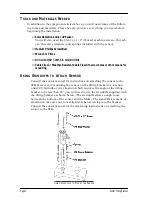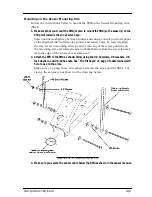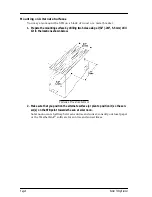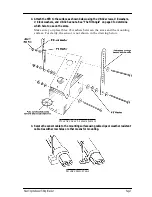
Page 4
Sensor Tilting Bracket
Determining the Correct Tilt Angle
If you know the angle at which you want to mount the sensor (to match the
angle of a solar panel, for example), use the table in “The Tilt Angle” on page 3
to determine which hole on the STB arms best matches that angle.
To maximize solar radiation or UV readings (and all related readings), start by
determining your latitude. Determine the correct angle (depending on the sea-
son during which you want maximum readings) as described below. Finally,
use the table in “The Tilt Angle” on page 3 to determine which hole on the STB
arms best matches that angle.
Note:
If desired, you may change the angle of the STB every four months to maximize your readings
year round.
✦
Maximum Readings During Spring or Fall
If you want maximum readings in the Spring or Fall, use your latitude as
the angle (that is, at 45˚ latitude, use an angle of 45˚).
✦
Maximum Readings During Summer
If you want maximum readings in the Summer, subtract 18˚ from your
latitude to determine the correct angle (that is, at 45˚ latitude, use an
angle of 27˚).
✦
Maximum Readings During Winter
If you want to maximize readings in the Winter, add 18˚ to your latitude
to determine the correct angle (that is, at 45˚ latitude, use an angle of
63˚).
For greater accuracy in determining the correct angle, consult a table of the
sun’s declination over the desired time span. The best tilt angle is derived by
subtracting declination from latitude. You may then use the table in “The Tilt
Angle” on page 3 to determine which hole on the STB arms best matches that
angle.








